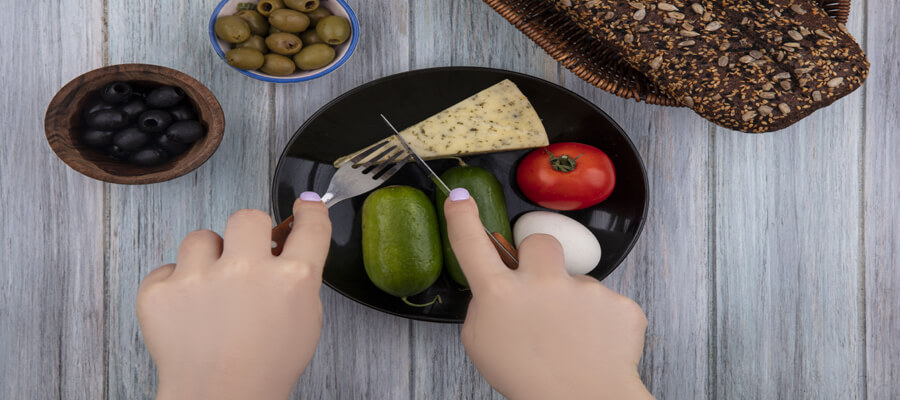
How to Choose the Right Portion Size for Your Dog’s Meals
Choose the Right Portion Size for Your Dog’s Meals
Introduction
Feeding your dog the right portion size is crucial for their overall health and well-being. Just like humans, dogs require a balanced diet that meets their nutritional needs, and serving the correct portion can prevent issues like obesity, malnutrition, and digestive problems. In this guide, we’ll explore the factors to consider when determining the right portion size for your dog’s meals and provide practical tips to ensure they are receiving the right amount of food.
Understanding Your Dog’s Nutritional Needs
Factors Affecting Portion Size
- Age: Puppies, adults, and senior dogs have different nutritional needs. Puppies typically require more calories to support growth, while older dogs may need fewer calories and more nutrients to maintain health.
- Weight: The ideal weight for your dog plays a significant role in determining portion sizes. Overweight dogs need smaller portions, while underweight dogs may require more food.
- Activity Level: A dog’s level of activity directly affects their caloric needs. Active dogs need more calories to fuel their energy expenditure, whereas sedentary dogs require less.
- Breed: Different breeds have varying metabolic rates and size. Larger breeds may need more food than smaller breeds, but this can vary within the breed itself.
- Health Status: Dogs with certain health conditions (e.g., diabetes, allergies) may require specialized diets, impacting portion sizes.
Calculating the Right Portion Size
Essentials for Your Newly Adopted Pet
Welcoming a shelter pet into your life is a beautiful journey. Here are some handpicked items to help your new friend feel safe, loved, and right at home:
Feeding Guidelines
- Check the Dog Food Label: Most commercial dog foods provide feeding guidelines based on the dog’s weight and age. Use these guidelines as a starting point.
- Consult Your Veterinarian: Your vet can help determine the appropriate portion size tailored to your dog’s specific needs, taking into account their age, weight, activity level, and health.
- Use a Feeding Chart: Feeding charts can offer a general guideline for portion sizes based on weight and activity levels. Here's a simple example:
|
Weight of Dog (lbs) |
Daily Food Amount (cups) |
|---|---|
|
5-10 lbs |
1/2 - 1 cup |
|
11-20 lbs |
1 - 1.5 cups |
|
21-40 lbs |
1.5 - 2.5 cups |
|
41-60 lbs |
2.5 - 3.5 cups |
|
61-80 lbs |
3.5 - 4.5 cups |
|
81 lbs and up |
4.5+ cups |
Portion Control Tips
- Use Measuring Tools: Invest in a measuring cup or scale to ensure you’re serving accurate portions. Avoid guessing or eyeballing the amounts.
- Feed Twice a Day: Splitting your dog’s daily food allowance into two meals can help regulate hunger and prevent overeating.
- Monitor Body Condition: Regularly assess your dog’s body condition score (BCS). This score will help determine if your dog is at an ideal weight, underweight, or overweight, allowing you to adjust portions accordingly.
- Adjust Based on Feedback: Be attentive to your dog’s behavior and physical condition. If your dog seems consistently hungry or lethargic, it may be time to reevaluate portion sizes or consult your vet.
Common Mistakes to Avoid
- Overfeeding: One of the most common issues dog owners face is overfeeding, which can lead to obesity and related health issues. Stick to the recommended portion sizes and avoid giving in to begging behaviors.
- Inconsistent Portions: Maintaining a consistent feeding schedule with measured portions helps regulate your dog’s metabolism and aids in digestion.
- Not Accounting for Treats: Treats should be factored into your dog’s daily caloric intake. They shouldn’t make up more than 10% of your dog’s total daily calories.
- Ignoring Weight Changes: Regularly weigh your dog and assess their body condition. If your dog is gaining or losing weight unexpectedly, adjust their portion size and consult your vet if necessary.
Conclusion
Choosing the right portion size for your dog’s meals is vital for their health and longevity. By understanding their nutritional needs and considering factors such as age, weight, activity level, and breed, you can ensure your dog receives the appropriate amount of food to thrive. Regular monitoring and adjustments will help maintain a healthy weight, preventing obesity and promoting overall well-being. Always consult your veterinarian for personalized advice, and remember that a well-fed dog is a happy and healthy companion!
Affiliate Products
We may earn a small commission when you shop through our links — it helps us keep sharing love and care for every dog out there, at no extra cost to you.
Up to 75% Discount

Dog Collar with Health Monitoring
BUY NOW »
Up to 55% Discount

Luxury Faux Furhuge Napping Bed
BUY NOW »

